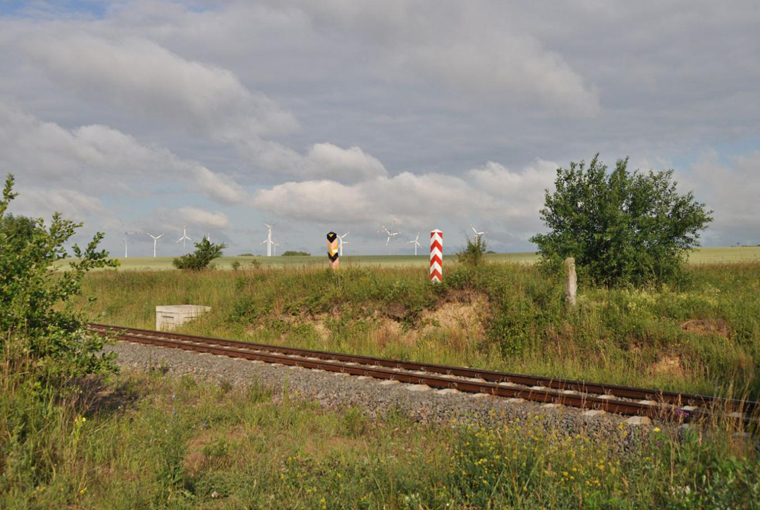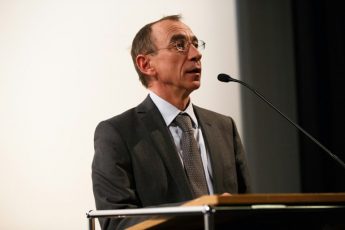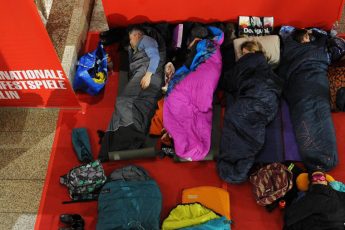
How does the story begin?” Director Philip Scheffner asks this question a dozen times during Revision. The film begins in a cornfield in North-East Germany in 1992 where two dead bodies are found by the farmers who own the land. How does the story begin? For the Velcu family, it begins when Grigore Velcu, the father, leaves their home in Germany for a week-end in their home country of Romania and never returns. For the wife of Eudache Calderar, the story begins when she receives a phone call at her place in Romania saying that her husband has been shot.
Revision is neither documentary nor fiction nor activist film. It interrogates two very real Roma families – one living in Romania, the other living in Germany – who suffered the loss of their fathers in the mysterious cornfield shooting of 1992.
However, the families are hardly the subject of the film, and rightly so, as the film critiques the very fact that the Roma community is already subject to invasive German attention. Although the film primarily contains interviews with the families and other actors (prosecutor, neighbor, journalists) involved in the deaths, often the interviewee is shown listening to their own interview. As Scheffner explains, the concept was to do five or ten minutes of interview, take a break, and then to film the interviewee listening to the recording in order to “create a similarity between the listener in the audience and the listener onscreen”. The result: the touchingly awkward sight of Eudache Calderar’s wife, for example, nodding in agreement through her tears as she listens to her own voice speaking of her deceased husband. On the one hand, we, too – the audience – are reacting to the monologue we hear, on the other hand, we are privy to a moment of self-reflection that is hardly our own.
In a similar customization of documentary style, Scheffner plays with the manner of titling interviewees. Here, you see the interviewee’s face, hear them monologize (Scheffner’s voice is never heard, unlike the ambient noise and the voice of the translator), and then, after the first impressions on the viewer’s side, the screen goes black and re-centers on the interviewee – this time with their name and role superimposed on the image. Much like the (occasionally painful) intimacy of watching an individual listen to their own voice, the delayed titles create a closeness with the interviewee. The director questions judgement: is there more truth in a first impression based on appearance, gestures, and first few phrases – or an impression informed by the role of the individual, be it lawyer, neighbor or television journalist?
The subject matter of the film originated in Scheffner’s self-declared interest in “Fortress Europe and migrants”. Luckily, the film steers clear of a simplified political diatribe (Roma = victims, Europe = bad) by letting the facts speak for themselves, and by allowing the families of the men killed to portray their lives unfettered. The families choose and show their own photos, and their verbal descriptions are seemingly unstructured by the directors. We see formal photo-portraits of the Velcu family, and learn that they were wealthy and comfortable, perhaps even socialites in Romania before the revolution. “There was no money after the Revolution” says the wife of Giorgio Velcu. “We had to move to Germany. We had to to survive”.
This sentiment is echoed by the family and neighbors of Eudache Calderar (the other man found dead) who remained in Romania “I don’t like to think about that period” says his wife, speaking of how she ended up on the streets with her children. “Not because of how it was painful for me, but the children…”
Neither the narrator nor the interviewees in Revision say that economic hardship justifies illegal immigration, although immigration, and particularly Roma immigration, is the obvious subtext of the events. The facts are given. The bodies were found near the Polish-German border. They were probably illegally crossing. 612 illegal immigrants had been caught in that area that very month (June 1992). Many hunters in the area had stopped hunting at night because they knew about the frequent border crossings. The hunters suspected of shooting Calderar and Velcu turned out to be innocent.
The film waffles between interviews of family reminiscence and interviews regarding the trial for manslaughter that followed the deaths. As Scheffner narrates the facts of the case and related statistics, he shows footage of the windmills, cornfields, and blue sky that characterize the region. The comparison between the slow turn of the windmill and the slow speed of German justice is obvious, and the irony of the blue skies as Scheffner describes anti-Roma hate crimes is about as subtle as a cardiac arrest.
That said, this is not a story about the predominance of anti-immigrant sentiment in North-East Germany, and it is not a film about “Fortress Europe” in particular. The most blatant juxtaposition of all is that between the portrayal of these men as anonymous Roma victims in a trial, and the portrayal of these men as men. As the co-writer, Merle Kröger, said after the world premiere at the Berlinale, “by meeting this family, they are persons for me”. It sounds crass, but it’s true: this film is not about the justice system, but the justice inherent in acknowledging persons: persons remembered, and persons remembering.
And is there a difference between remembering a person and watching a film? After all, we are all witnesses.




Leave a Comment